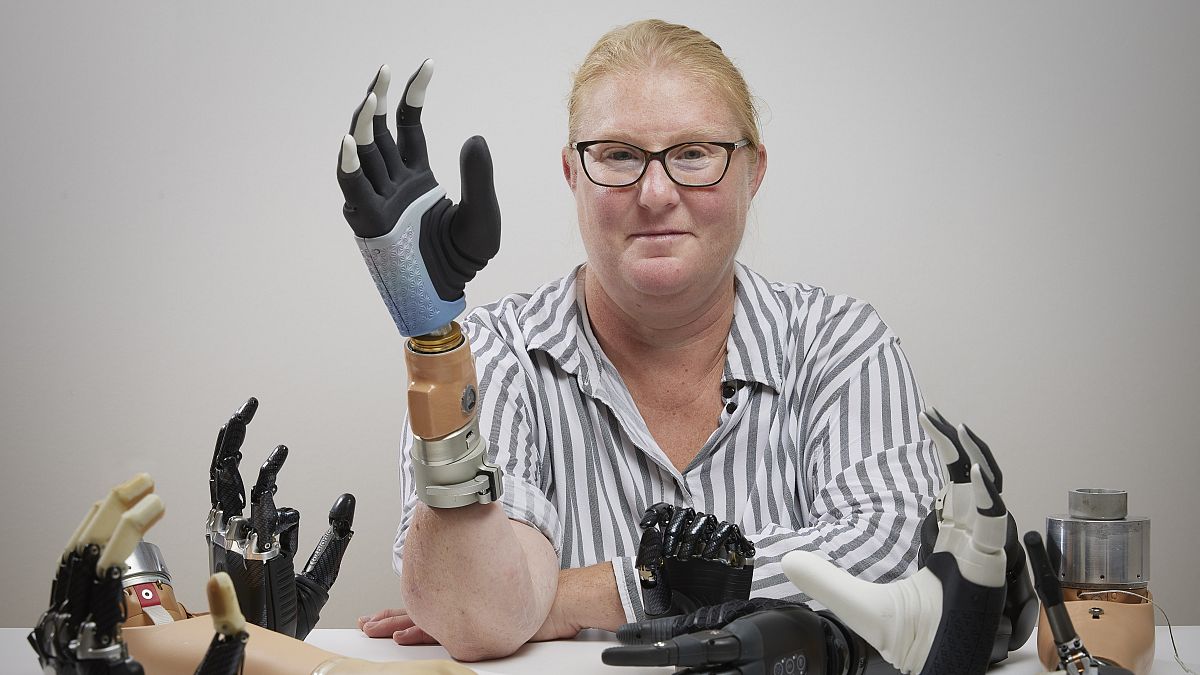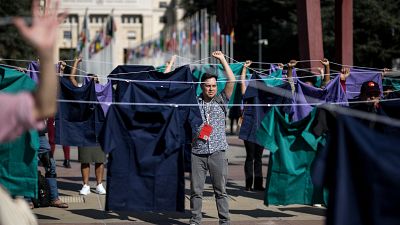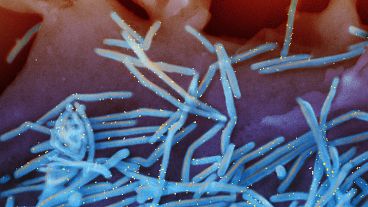The bionic arm has been working for years, reducing the user’s level of pain. The first person to receive it tells how life changing it has been.
A woman who lost her arm to a farming accident has revealed how a groundbreaking bionic prosthetic has been transformational in her life.
The technology fuses the bionic arm to the user’s skeleton, while also connecting it with the nervous system using electrodes that are implanted in nerves and muscles.
After her accident more than 20 years ago, *Karin was plagued by high levels of phantom limb pain - where an amputee perceives pain or discomfort in a limb that is no longer there.
“It felt like I constantly had my hand in a meat grinder, which created a high level of stress and I had to take high doses of various painkillers,” she said.
Many people struggle with adapting to conventional prosthesis, as mechanical attachment and reliable control of the limbs are two of the main challenges in artificial limb replacement.
This was the case for Karin for many years, finding the conventional prostheses uncomfortable and unreliable.
However this all changed when she became the first person with a below-elbow amputation to receive the new type of bionic hand - installed with “an integrated surgical and engineering approach,” according to Professor Max Ortiz Catalan, head of neural prosthetics research at the Bionics Institute in Australia and founder of the Center for Bionics and Pain Research (CBPR) in Sweden, who led the research.
“For me, this research has meant a lot, as it has given me a better life,” said Karin, who added that she now has “better control over my prosthesis, but above all, my pain has decreased. Today, I need much less medication”.
Fusing humans and machine
This transformation in Karin’s life is a result of a unique technique which essentially fuses the user’s skeleton to the bionic arm using osseointegration - where an implant is accepted by the bone as part of it, rather than as some foreign object.
The implant acts as a permanent anchor for the prosthetic, which can then be easily attached and removed.
A team of engineers and surgeons led by Catalan developed the human-machine interface, which also enables electrical connection with the user’s nervous system by using electrodes implanted in certain nerves and muscles.
“Karin was the first person with below-elbow amputation who received this new concept of a highly integrated bionic hand that can be used independently and reliably in daily life,” explained Catalan.
“The fact that she has been able to use her prosthesis comfortably and effectively in daily activities for years is a promising testament to the potential life-changing capabilities of this novel technology for individuals facing limb loss”.
Catalan added that the “integrated surgical and engineering approach” also helped to reduce Karin’s level of pain, as she is now using many of the same neural resources to control the prosthetic that she did with her biological arm.
“The biological integration of titanium implants into bone tissue creates opportunities to further advance amputee care,” explained Professor Rickard Brånemark, research affiliate at MIT, associate professor at Gothenburg University, and CEO of Integrum, who led the surgery and has worked with osseointegration for limb prosthesis since they were first used in humans.
“By combining osseointegration with reconstructive surgery, implanted electrodes, and AI, we can restore human function in an unprecedented way. The below elbow amputation level has particular challenges, and the level of functionality achieved marks an important milestone for the field of advanced extremity reconstructions as a whole”.
The bionic hand itself is developed by Italian robotics company Prensilia, and is called Mia Hand. It features unique motor and sensory components that allow the user to carry out around 80 per cent of the activities of daily living.
“The acceptance of the prosthesis is critical for its successful use,” said Dr Francesco Clemente, Managing Director of Prensilia.
“Besides technical performance, Prensilia struggled to develop a hand that could be fully customisable aesthetically. Mia Hand was born to be shown and not hidden. We wanted the users to be proud of what they are, rather than ashamed of what was lost”.
*Karin’s full name has been withheld for privacy reasons.



